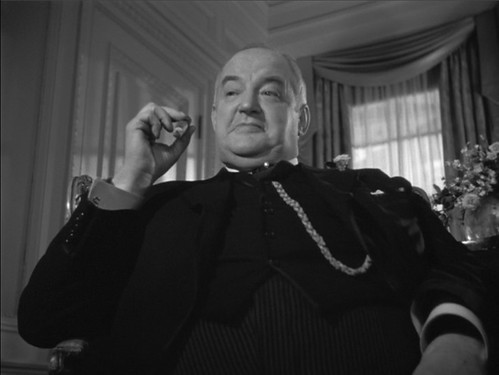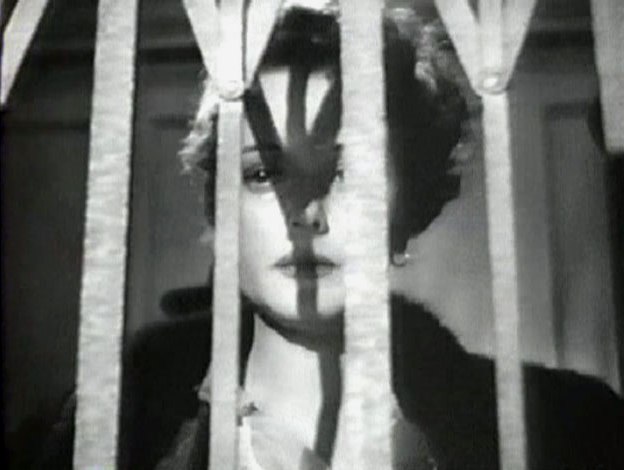Credited as one of the defining films of the Film Noir genre, it is perhaps not surprising that many of the features of this film have become cliches of the genre. Although there had already been two other adaptations of the Dashiell Hammett book, this film was the first to follow the book faithfully. (The first, The Maltese Falcon (1931) rewrote the character of Sam Spade as more of a sophisticated playboy, in keeping with contemporary expectations about private detectives; while the second, Satan meets a Lady (1936) was a comedy) (Berardinelli, 2012).
The most obvious feature of the film is that it is in black and white; whilst this was partly a technological issue (black and white film being cheaper and easier to use than available colour films), it also enabled the director John Huston to incorporate techniques borrowed from German Expressionist films, specifically a focus upon light and shadow. This has had such an effect upon the audience that even the literary genre (which preceded the film genre) is known as noir. Much of the film is set in shadows (usually nighttime streets), with only a few well-lit sets (principly, Sam Spade's office and Kaspar Gutman's hotel suite).
The second feature is the character of Sam Spade (Humphrey Bogart); a wisecracking hard-bitten private eye who appears to only care about his paycheck. Previously, film detectives (with the exception of police ones) were individuals of private means who solved crimes out of a sense of curiousity or a desire to see justice upheld; this was the type of character Sam Spade was re-written as in the 1931 version of the film. Sam Spade solves crimes either because he is being paid to, or because of a personal code of honour; this code is the reason Spade sets out to identify the killer of his partner at the begining of the film. Unlike previous film detectives, Spade has an uncomfortable relationship with the police force; they suspect (correctly) that he isn't telling them everything, he believes that they are primarily interested in closing the case as quickly as possible, rather than finding the real killer (this is also possibly correct).
Fig 1. Sam Spade and Detectives [Still]
From a technical point of view, there are several interesting features in the film. Firstly, the character of Sam Spade appears in ever shot of the film except one - the scene in which his partner is killed. This helps to ensure that the audience know only as much as Spade, and unravel the mystery at the same rate as him. The character of Kaspar Gutman, notable for his large stature, is frequently photographed from below to emphasise his size; while scenes with the femme fatale Brigid O'Shaughnessy (Mary Astor) often incorporate subtle references to prison, in the form features such as vertical stripes on furniture, venetian blinds, and the grate of a lift. It incorporates a 7-minute shot (the scene where Gutman drugs Spade) which involves several complicated camera moves (Ebert, 2001). Finaly, the film in general makes use of a relatively small number of longer scenes - the final scene lasts nearly 20 minutes and takes place almost entirely inside Spade's apartment.
Fig 2. Kaspar Gutman [Still]
Fig 3. Brigid O'Shaughnessy [Still]
List of Illustrations
Figure 1. Sam Spade and Detectives (1941) From: The Maltese Falcon Directed by: John Huston [Film Still] USA: Warner Brothers Pictures [Online at http://media-3.web.britannica.com/eb-media/45/72745-004-94A90B62.jpg (Accessed on 04/01/2012)]
Figure 2. Kaspar Gutman (1941) From: The Maltese Falcon Directed
by: John Huston [Film Still] USA: Warner Brothers Pictures [http://farm4.static.flickr.com/3318/3271228878_a33091cf87.jpg
(Accessed on 04/01/2012)]
Figure 3. Kaspar Gutman (1941) From: The Maltese Falcon Directed
by: John Huston [Film Still] USA: Warner Brothers Pictures [http://robertarood.files.wordpress.com/2009/08/maltesefalcon4.jpg (Accessed on 04/01/2012)]
Bibliography
Berardinelli, J (2012) Reelviews Movie Reviews: Maltese Falcon, The http://www.reelviews.net/php_review_template.php?identifier=684 (Accessed on 02/01/2012)
Braud, S (2012) Empire Essay: The Maltese Falcon http://www.empireonline.com/reviews/reviewcomplete.asp?FID=132880 (Accessed on 04/01/2012)
Ebert, R (2001) The Maltese Falcon (1941) http://rogerebert.suntimes.com/apps/pbcs.dll/article?AID=/20010513/REVIEWS08/105130301/1023 (Accessed on 04/01/2012)
IMDb.com (2012) IMDb.com http://www.imdb.com/title/tt0033870/ (Accessed on 03/01/2012)





No comments:
Post a Comment